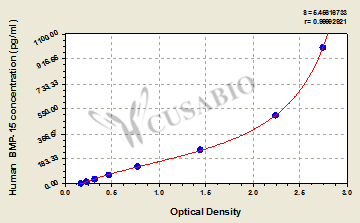This human BMP15 ELISA kit employs the quantitative sandwich enzyme immunoassay technique to measure the levels of human BMP15 in multiple samples, including serum, plasma, or cell culture supernates. It also uses the enzyme-substrate chromogenic reaction to visualize and analyze the analyte levels through the color intensity. The intensity of the colored product is in direct proportion to the BMP15 levels in the sample and is measured at 450 nm through a microplate reader.
BMP15 is expressed in oocytes and acts synergically with growth differentiation factor 9 (GDF9) towards the regulation of folliculogenesis. In addition to folliculogenesis, BMP15 is essential for female fertility. BMP15 and GDF9 polymorphism play vital roles in the pathogenesis of polycystic ovary syndrome (PCOS) and disturbed follicular steroidogenesis. BMP15 is closely related to animal reproduction and woman reproductive disease. As a multifunctional oocyte-specific secret factor, BMP15 controls female fertility and follicular development in both species-specific and dosage-sensitive manners. Mutations in BMP15 can cause both infertility and super ovulations in a dosage-sensitive manner.






